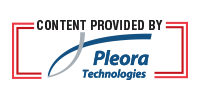
Product perfection is now an expectation for consumers, which places far more pressure on manufacturers to always deliver. Surprisingly, a great deal of quality control and inspection still relies on the human eye and subjective decisions.
When it comes to inspection tasks, humans do a pretty good job. We can rely on our senses to detect differences, and even taste and smell depending on the product. If something changes, we’re adaptable and can make a quick decision on our own. We’re also pretty easy to train, and we learn by example.
However, when we get tired, distracted or bored we start making mistakes. Our eyes can also trick us. Traditional vision inspection has error rates as high as 30 percent. Often, what an inspector flags as an error is actually a false positive as they begin to doubt their own decisions.
The key advantage with technology – it can make decisions faster, consistently, and over and over without getting bored. Now with artificial intelligence (AI), machines can begin to learn and make their own decisions. Despite these machine advantages, there’s still a significant requirement for humans in inspection processes. For manufacturers specializing in short-run, customized, seasonal, and regional products it’s often uneconomical to fully automate inspection processes. Premium and boutique brands also place a lot of emphasis on the human touch in their manufacturing process. For these manufacturers, AI-based visual inspection tools can help add decision-support so an operator always makes the right, objective choice.
New AI-based tools for visual inspection take advantages of advances in edge processing and simplified algorithm development to help highlight product differences and deviations. For many manufacturers who have or are evaluating AI, model training and development pose significant cost and expertise barriers. In comparison, new tools use operator input to help train the AI model. Using a basic image compare function, the system visually highlights possible product differences for an operator as they evaluate products against a saved “golden reference” image. As the operator accepts or rejects initial possible errors, behind-the-scenes the AI model is transparently trained and it will quickly begin suggesting if it thinks a difference is an error.
In addition, automated and customizable reporting tools help manufacturers gain data on visual inspection processes. Often, visual inspection poses a “data black hole” for manufacturers, which makes it difficult to ensure end-to-end quality and time-consuming to resolve issues when errors occur. For example, with these reporting tools, operators can capture images of manual inspected products alongside their notes and save the data to their manufacturing planning system.
AI Decision-Support and PCB Inspection
One of the key areas where visual inspection is still critical to quality control is in electronics inspection. While mass produced consumer goods benefit from machine vision, there is still a place for skilled human inspection for custom or short-run products where full automation is too expensive or complex. In addition, while automated optical inspection (AOI) catches most errors, it may miss issues such as component orientation, through hole, labelling, and soldering defects.
DICA Electronics is a specialized electronics manufacturer with expertise in smaller run, customized products for high-value, high-reliability applications. The company has adopted AI based decision-support tools for products not well-suited to AOI, or as a secondary inspection following manual processes. The intent is not to replace the human inspector, but help ensure they are making consistent, informed decisions as their attention to detail may begin to fade over a long day. Additionally, new products or inspectors can be more easily added to the production line, with AI ensuring the same consistent decision is made.
The manufacturer has trained the system with number of “golden reference” images for manually inspected products. As part of the training, the operator’s own early decisions on possible defects has helped train and fine-tune the AI model. As the operator and quality manager gains confidence in the accuracy of the system, they can stop AI model training. The company was able to start using AI, without requiring algorithm development expertise.
As important as error-detection, the system’s integrated reporting tools provides the manufacturer with key data surrounding manual inspection processes. DICA uses the image save function included in the reporting capabilities to capture a photo of every manually inspected board and its bar code, along with any operator notes. Data is then saved to their manufacturing resource planning software, along with data from their automated inspection processes. If an in-field error is reported, the manufacturer can then verify if a “good part” left their facility to help speed resolution.
The ability to help pinpoint errors in manual processes, or verify that a good product did leave the facility and a downstream issue is cause for concern, saves the manufacturer from numerous hidden costs. Without data, quality managers and staff are diverted to issue resolution processes, often involving numerous emails and phone calls with customers and other suppliers. Replacement parts may be shipped at the cost to the manufacturer, even though the root cause of the issue may not have been within their process or area of responsibility.
